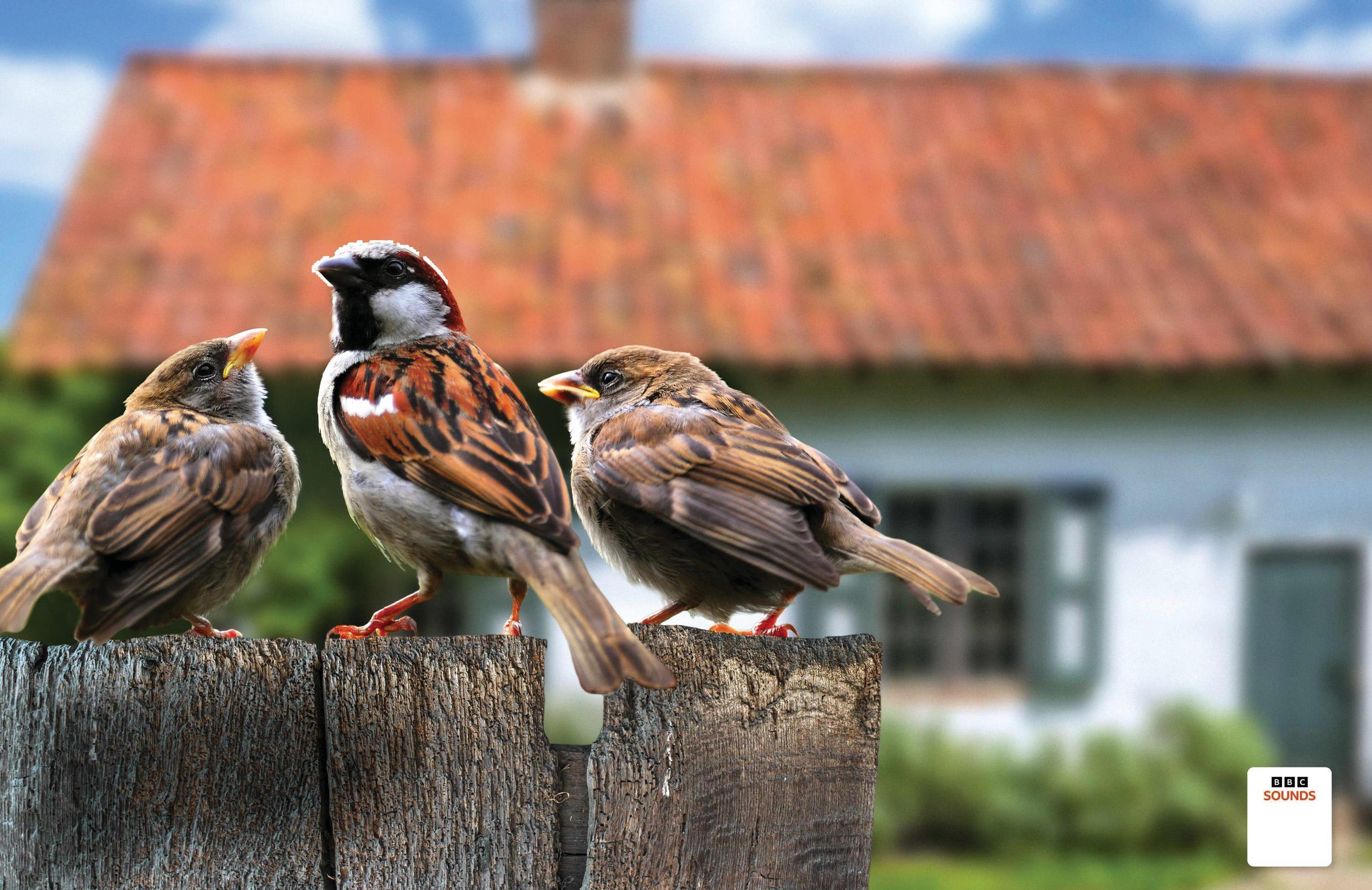ROOM FOR A LITTLE ONE?

THE CLATTER OF TRAFFIC IS PIERCED MOMENTARILY by the sound of my drill screaming into the brickwork. I'm halfway up a ladder clinging to the chimney of my local pub, the Red Lion (which is ironically painted green), surrounded by an expansive landscape of concrete, interspersed by the occasional fluffy green bush.
My assistant, Matthew, relays screws to me with an outstretched arm. He has offered his assistance in return for a supermarket meal deal.
It’s August 2021 and we’re installing birdboxes around Portsmouth in the warmth of a golden sun. This is the seventh of the day. Four are already in place on the pub’s exterior and, earlier this morning, two went up on the walls of an antique furniture shop. Bar the boisterous gangs of gulls, there’s only one bird around, and it’s the very species we’re trying to create a home for: the humble house sparrow.
House sparrows, you see, need our help. They may be regarded as common brown birds, yet these characterful little passerines are struggling. We still don’t know exactly why, but in urban areas, it’s likely the result of air pollution attacking their delicate lungs; a catastrophic decline in their invertebrate prey; disease, including avian malaria; and the loss of the older buildings – complete with loose tiles, crooked eaves and other nooks and crannies – in which they nest.
Between 1966 and 2016, we lost a staggering 21.7 million of them, almost one per minute. The scenes of urban hedges fat with chestnut bodies and parks loud with evocative squabbles are now a distant memory. Hyde Park was once thronged with hundreds of sparrows but, like many other parts of the capital, has fallen silent.
この記事は BBC Wildlife の October 2022 版に掲載されています。
7 日間の Magzter GOLD 無料トライアルを開始して、何千もの厳選されたプレミアム ストーリー、9,500 以上の雑誌や新聞にアクセスしてください。
すでに購読者です ? サインイン
この記事は BBC Wildlife の October 2022 版に掲載されています。
7 日間の Magzter GOLD 無料トライアルを開始して、何千もの厳選されたプレミアム ストーリー、9,500 以上の雑誌や新聞にアクセスしてください。
すでに購読者です? サインイン

JAWS 50 THE LEGACY
Half a century after a great white shark terrified cinemagoers, we hunt down the lasting impacts of Spielberg's blockbuster

PRIMAL SCREAM
A wildly unusual bird call shatters the peace of a tropical dawn

Find more birds more of the time with multi-spectrum binoculars from HIKMICRO
Find more birds more of the time with multi-spectrum binoculars from HIKMICRO

Losing touch with reality
As AI becomes increasingly powerful, what does it mean for the wildlife images we see?

Bongos have come home
The secretive antelope is hoping for better times in Kenya

Do animals get stressed?
We often think of stress as a bad thing, but it has evolved to protect us. When we find ourselves in life-threatening situations, our bodies prepare to fight or run.

Secrets of the Penguins
New series for National Geographic offers unprecedented insight

How I learned to speak wolf
Deep in Yellowstone's Lamar Valley, George Bumann develops a sense of what wolves' howls can mean

Which animal has the longest tail?
STRICTLY SPEAKING, THE TAIL-LIKE structures found in everything from scorpions to mayflies are not true tails. Only vertebrates – animals with a spine – are genuine tail-owners. And among vertebrates, tails are really common.

Lesser goldfinches are moving north
Warmer temperatures are leading these irrepressible golden-hued birds to expand their range in the USA
